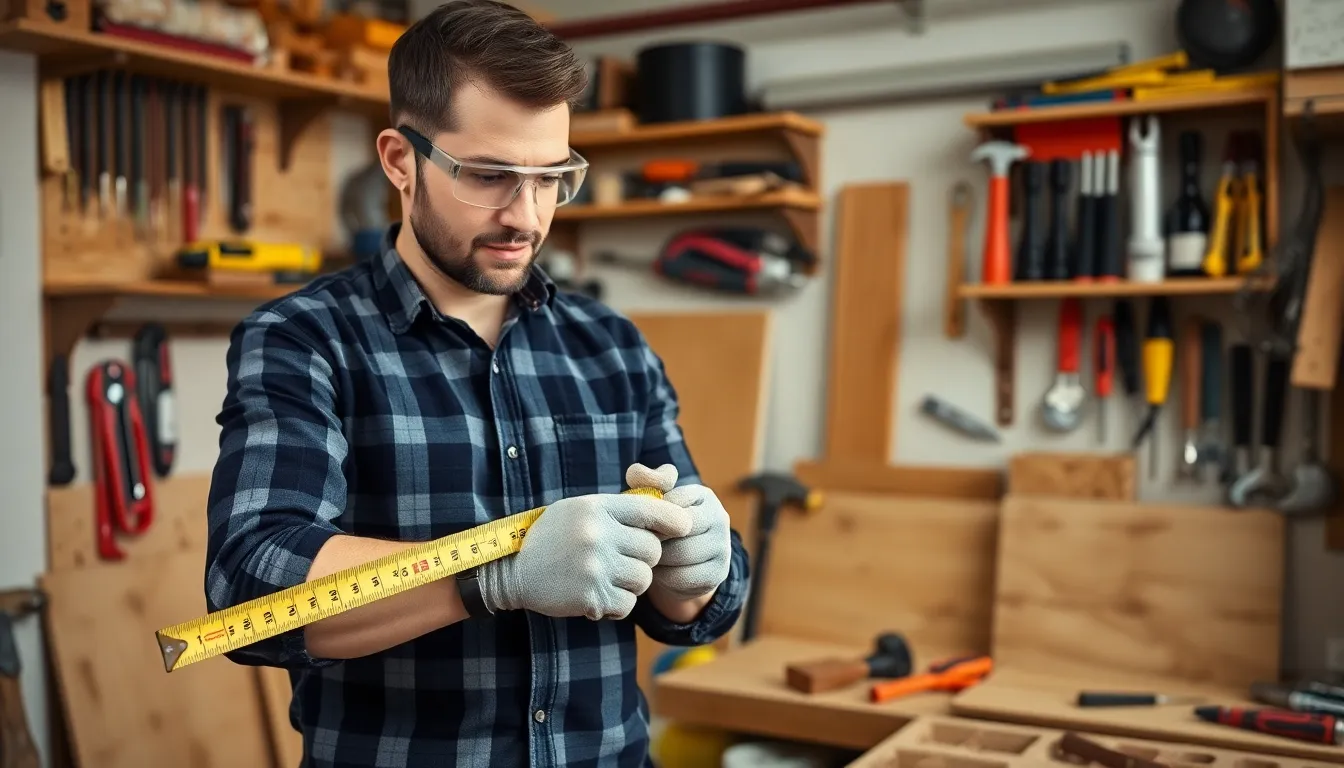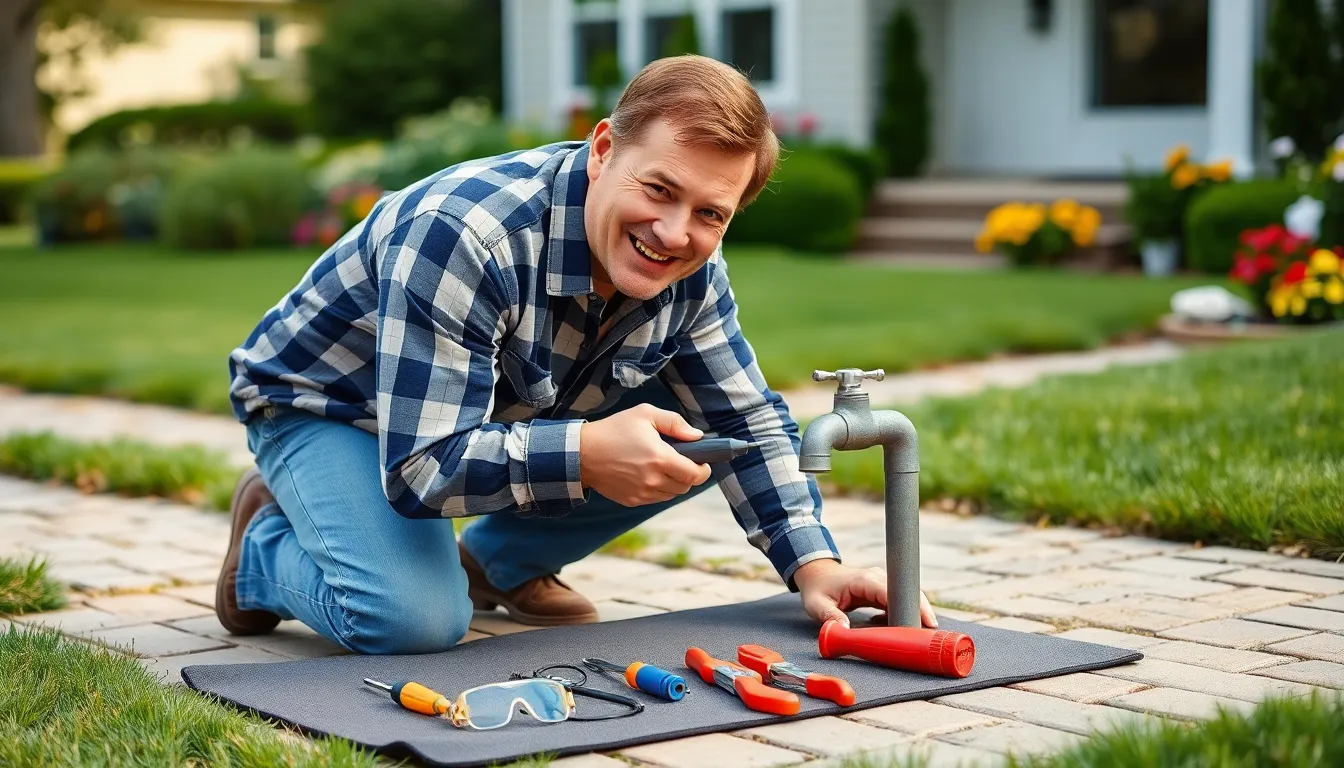Table of Contents
ToggleHomeownership can feel like a never-ending game of whack-a-mole. Just when you think you’ve fixed one issue, another pops up to keep you on your toes. But fear not! DIY home maintenance is here to save the day and your wallet. With a little know-how and a dash of creativity, tackling those pesky repairs can become less of a chore and more of a satisfying adventure.
Overview of DIY Home Maintenance
DIY home maintenance involves various tasks that homeowners can tackle independently. Engaging in these activities can enhance comfort while prolonging the lifespan of one’s property. Simple repairs like fixing leaky faucets or patching drywall can save substantial amounts on professional services. Understanding these tasks fosters confidence and encourages proactive management of home conditions.
Homeowners benefit by becoming familiar with necessary tools and techniques. Each task learned can lead to increased self-sufficiency and reduced reliance on contractors. Routine maintenance, such as cleaning gutters or checking smoke detectors, prevents larger issues from developing. Scheduling these tasks becomes essential for maintaining a safe, efficient home.
Budgeting for materials plays a crucial role in DIY projects. Planning ensures that necessary supplies are available without unexpected expenses. Homeowners can research costs online or at local hardware stores to find the best solutions without overspending. Utilizing online tutorials and guides simplifies the learning process.
Routine inspections enable homeowners to identify potential problems early. Regular checks on plumbing systems, electrical fixtures, and appliances contribute to long-term sustainability. Taking initiative in these areas leads to improved energy efficiency, minimizing utility bills over time.
Prioritizing essential maintenance tasks creates a systematic approach. Focusing on urgent repairs first prevents small issues from escalating. This proactive strategy satisfies both immediate needs and overall home improvement goals. Embracing DIY home maintenance transforms daunting responsibilities into manageable projects, creating a rewarding experience for homeowners.
Essential Tools for DIY Home Maintenance

Having the right tools simplifies DIY home maintenance tasks. A well-equipped toolkit enhances efficiency and ensures successful results.
Basic Tool Kit
A basic tool kit consists of essential items for various repairs. Screwdrivers in multiple sizes allow for adjustments on different fixtures. A hammer proves valuable for hanging pictures or addressing loose nails. Pliers, especially needle-nose types, assist with grasping and bending wires. A tape measure aids in precise measurements, helping avoid mistakes during projects. Lastly, a utility knife comes in handy for cutting materials like drywall or rope. Each of these tools plays a crucial role in daily repairs and improvements around the home.
Safety Equipment
Prioritizing safety during DIY tasks prevents accidents and injuries. A quality pair of safety goggles protects eyes from debris and dust when working. Hearing protection helps shield against loud noises, especially when using power tools. Work gloves offer protection from sharp edges and reduce hand fatigue during extended tasks. A dust mask becomes essential when sanding or working with potentially harmful materials. Lastly, a first-aid kit ensures prompt treatment for minor injuries. Investing in safety equipment makes each project safer and more manageable, fostering a secure working environment.
Common DIY Home Maintenance Tasks
Homeowners can take charge of essential maintenance tasks, enhancing their living environment. Many common repairs fall into a few key categories.
Plumbing Repairs
Leaky faucets create frustration and waste water. Replacing washers or cartridges can resolve most leaks. Clogs frequently occur in sinks and tubs. A mixture of baking soda and vinegar often clears these blockages effectively. Homeowners can also check their toilet tank for silent leaks by adding food coloring to the tank; a colored bowl indicates a problem. Regular inspection of pipes can prevent major leaks. Keeping an eye on outdoor hoses and faucets helps avoid costly damages during freezing temperatures.
Electrical Fixes
Flickering lights often signal a loose bulb or faulty fixture. Homeowners can easily replace bulbs or tighten connections as a first step. Tripped circuit breakers may indicate overloads; redistributing appliances across different circuits can help. Installing dimmer switches enhances ambiance and energy efficiency. GFCI outlets in kitchens and bathrooms prevent leaks, while identifying signs of wear provides an opportunity for replacement. Homeowners can ensure their smoke detectors and carbon monoxide alarms work by testing them monthly. Running through these checks boosts safety and minimizes risks.
Seasonal Maintenance Tips
Seasonal maintenance is crucial for keeping a home in top condition. Homeowners should follow specific checklists for each season, ensuring a comfortable and safe living environment.
Spring Cleaning Checklist
Spring cleaning involves several critical tasks that help refresh a home after winter. Homeowners must clean gutters to prevent water damage. Checking window screens for damage protects against insects. Inspecting the HVAC system ensures optimal performance before the heat of summer arrives. Another essential task is cleaning carpets and upholstery to remove allergens. Additionally, taking inventory of outdoor tools prepares for gardening and yard work.
Winter Preparation Essentials
Preparing for winter involves proactive measures against cold weather impacts. Homeowners should insulate pipes to prevent freezing. Sealing gaps in windows and doors helps maintain indoor temperatures. Inspecting the roof for missing shingles prevents leaks during snow or rain. Cleaning the chimney prepares for safe fireplace use. Lastly, stockpiling fuel for heating ensures comfort during winter storms.
Benefits of DIY Home Maintenance
DIY home maintenance offers numerous advantages that extend beyond simple repairs. Engaging in these tasks reduces dependence on costly professionals, allowing homeowners to save significantly over time.
Cost Savings
Cost savings stand out as one of the primary motivations for homeowners to tackle DIY maintenance. Performing simple tasks like fixing leaky faucets or unclogging drains helps avoid expensive service calls. Homeowners can also save on routine maintenance, such as gutter cleaning or HVAC inspections, which can accumulate into substantial amounts if outsourced. By purchasing materials directly and utilizing online resources, financial efficiency improves. Investing a little effort into DIY projects lowers long-term home maintenance expenses while providing a sense of accomplishment.
Skill Development
Skill development occurs naturally through DIY home maintenance. Handling various tasks fosters confidence in one’s abilities and encourages self-reliance. Homeowners learn valuable skills, like basic plumbing repairs or electrical troubleshooting, while also becoming proficient with essential tools. Each completed project enhances problem-solving capabilities and promotes resourcefulness. Gaining hands-on experience leads to an increased willingness to tackle more complex issues. As familiarity grows, the fear of undertaking repairs diminishes, and homeowners become more skilled at managing their living environments.
Embracing DIY home maintenance empowers homeowners to take control of their living spaces. By tackling repairs and routine tasks independently, they not only save money but also gain valuable skills. This proactive approach fosters confidence and transforms daunting projects into achievable goals.
Regular inspections and seasonal maintenance ensure a safe and efficient home environment. With the right tools and safety measures in place, every homeowner can approach maintenance tasks with ease. Ultimately, investing time and effort in DIY projects leads to a more rewarding homeownership experience, enhancing both comfort and sustainability.





